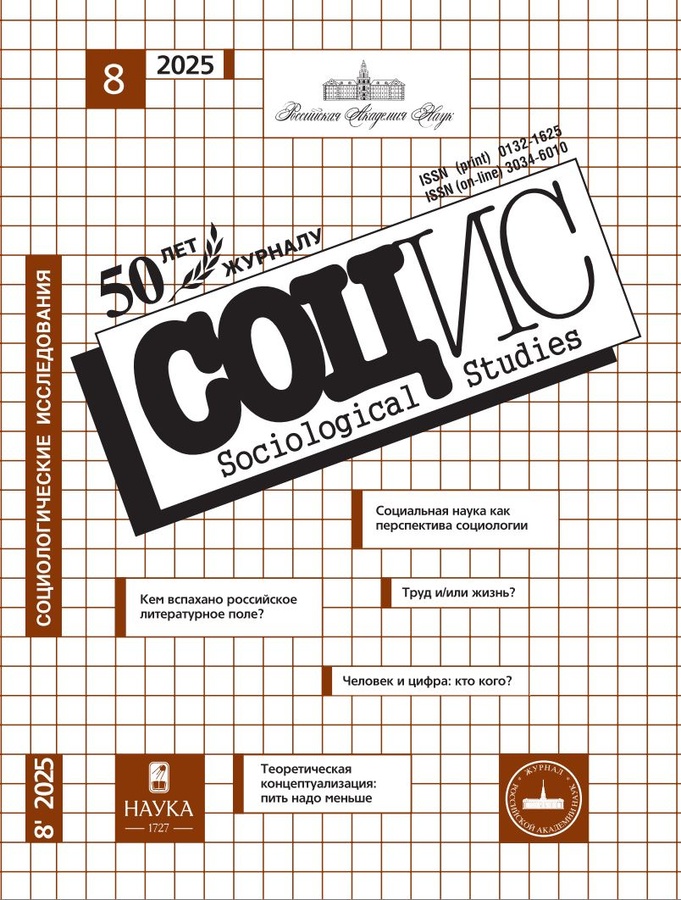Social tensions in the southern federal district: a retrospective protest practices analysis, 2015–2024
- Авторлар: CHELPANOVA D.D.1, KOTLYAROV S.E.2
-
Мекемелер:
- Southern Scientific Centre RAS
- Don State Technical University
- Шығарылым: № 8 (2025)
- Беттер: 147-152
- Бөлім: FACTS. COMMENTS. NOTES
- URL: https://snv63.ru/0132-1625/article/view/693348
- DOI: https://doi.org/10.31857/S0132162525080131
- ID: 693348
Дәйексөз келтіру
Аннотация
In the article, the authors’ attention is focused on solving an urgent scientific problem of studying the dynamics of protest activity within the Southern Federal District. The quantitative dynamics of protest activity in the Southern Federal District as a whole by year for the period from 2015 to 2024 has been determined, the frequency and mass of protest actions, peaks and epicenters of socio-political tension have been identified. The periodization of protest activity in the south of Russia is presented, indicating destabilizing causes of discontent among the population of the Southern Federal District. Four stages of protest activity have been identified, in each of which foci of social tension have been identified. The first stage of protest activity was characterized by the dominance of socio-economic discontent with the formation of a political protest against violations of civil rights and restrictions on freedoms, with epicenters in the Volgograd and Rostov regions. The second period was characterized by an expansion of the protest agenda: environmental demands were added to economic demands, as well as increased politicization of protests in connection with elections and constitutional changes with epicenters in Sevastopol, Astrakhan region and the Republic of Kalmykia. In the third period, there was a shift in protest focus to healthcare and education due to the COVID-19 coronavirus pandemic, as well as an increase in local protests related to environmental and infrastructural problems with the epicenter in the Republic of Kalmykia. The fourth stage of protest activity is associated with the intensification of political protests and the emergence of new triggers related to the consequences of its epicenters in Sevastopol and the Krasnodar region. In conclusion, the authors conclude that the analysis of protest activity in the Southern Federal District reflects all-Russian trends, identifying local problems typical of the Southern Federal District regions. Modern challenges (economic crises, pandemic, special military operation) exacerbate systemic problems, transferring them to public space in the form of street demonstrations.
Негізгі сөздер
Авторлар туралы
D. CHELPANOVA
Southern Scientific Centre RAS
Email: chelpanova@ssc-ras.ru
Rostov-on-Don, Russia
S. KOTLYAROV
Don State Technical University
Email: ks118@yandex.ru
Rostov-on-Don, Russia
Әдебиет тізімі
- Баранова Г. В. Методика анализа протестной активности населения России // Социологические исследования. 2012. № 10. С. 143–152.
- Внукова Л. Б., Челпанова Д. Д., Пащенко И. В. Социально-политическая напряженность в полиэтничном регионе. Ростов на/Д: ЮНЦ РАН, 2014.
- Давыдов Д. А. Динамика массовых протестных акций в современной России: событийный анализ // Мониторинг общественного мнения: экономические и социальные перемены. 2022. № 5. С. 72–93.
- Латов Ю. В. Протестные настроения и протестные действия россиян // Социологическая наука и социальная практика. 2017. Т. 5. № 1. С. 51–69.
- Семенов А. В. Протестная активность россиян в 2012–2013 гг. // Социологические исследования. 2018. № 11. С. 54–63.
- Юдина Т. Н., Мазаев Ю. Н. и др. Состояние и динамика протестной активности в современном российском обществе // Вестник Пермского ун-та. Философия. Психология. Социология. 2020. № 1. С. 139–151.
Қосымша файлдар









